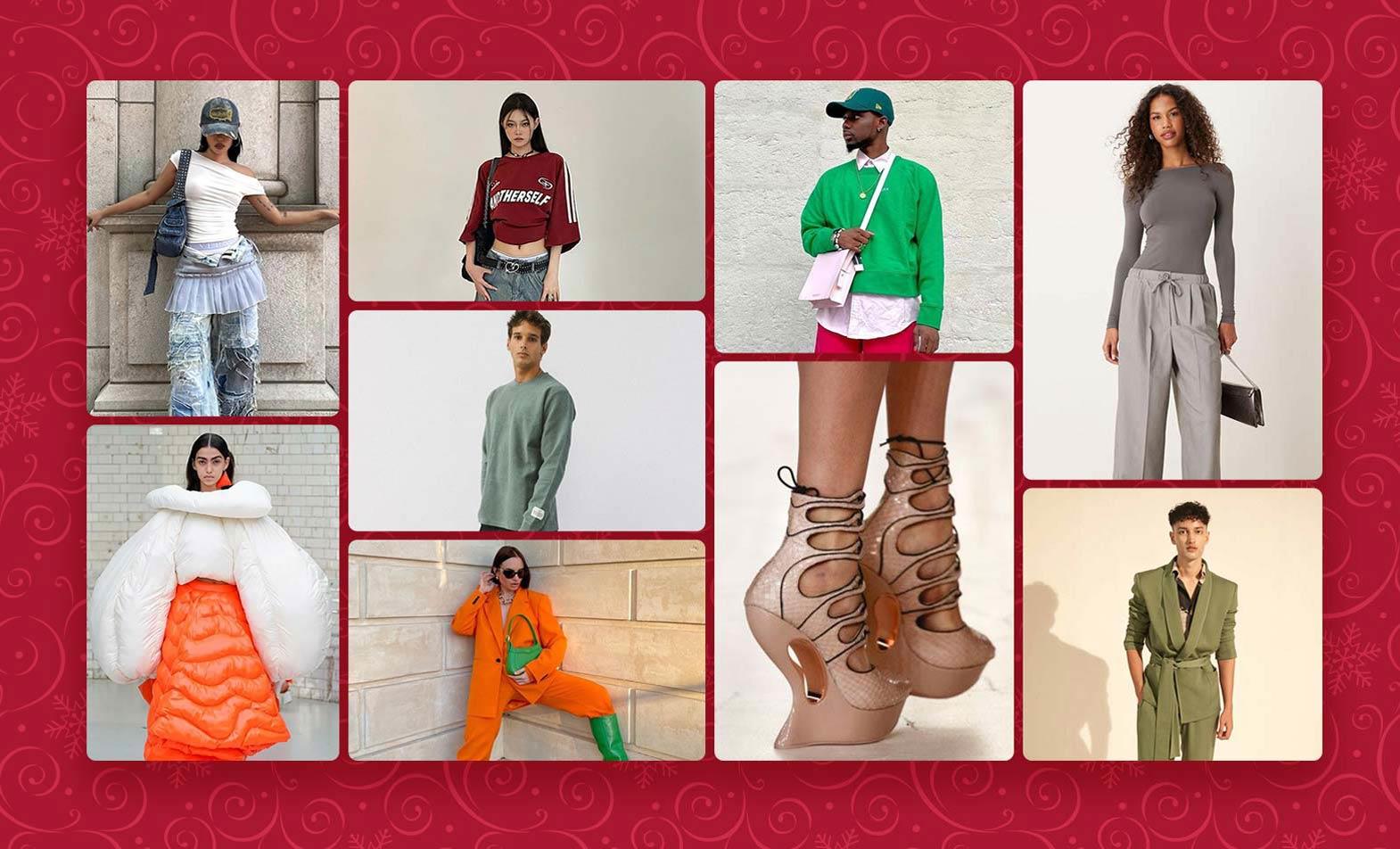Fashion
Why Kamala Harris Isn’t Making Bold Fashion Choices – Yet

When Kyra Maxwell ran the online merch store for Kamala Harris’ 2020 presidential campaign, some of the most popular designs were t-shirts featuring the phrase “this is what a president looks like.”
The slogan, a nod to the then-senator’s gender and her Black and South Asian heritage, called attention to the historic nature of her candidacy. Harris’ wardrobe — heels, the occasional Converse and pantsuits in conservative black, grey and navy — was less groundbreaking, even when she opted for designers like Altuzarra, Celine and Schiaparelli.
“She just is very clean, she’s very put together,” said Maxwell.
As the Democratic presidential nominee in 2024, Harris has maintained a conservative approach to dressing for the campaign trail. Fashion critics describe her style as less daring even than Hillary Clinton in 2016, who stuck to pantsuits but pushed the envelope ever so slightly with structural shapes and a few bold colours. As The Washington Post’s Rachel Tashjian put it, Harris’ fashion is “so unremarkable that it seems to resist, well, remarking.”
That’s probably the point.
It’s possible that Harris, a lawyer by profession, simply prefers pantsuits, neatly blown-out tresses and light, feminine makeup. But as the first Black and South Asian woman aspiring to the presidency, she’d have to weigh carefully how to express herself even if she wanted to, said Crystal deGregory, director of the Bethune Institute for the Study of Women and Girls.
Harris’ wardrobe is clearly designed to project respectability, polish and steadfastness. Any deviations from the rigid norms of political dressing — giving her stump speech in a T-shirt and baseball cap, or attending a fundraiser in a fashion-forward dress — could be perceived as a misstep or even offensive by the swing voters she’s trying to court.
“As many Black women in those positions of power have to do, she has to thread the needle especially closely,” Maxwell said. “Black women in general are given a little bit less margin of error.”
Harris, who heads into the Democratic National Convention Monday with a narrow lead over former president Donald Trump in most polls, will have opportunities to use fashion as a platform for her values — and to leverage style to express more culturally-relevant messages. And Harris isn’t unfashionable: Her campaign’s merchandise has been praised as relatively fashion forward (though the bar for the genre isn’t high). A collection released this month sees designers like Vera Wang, Tory Burch, Sergio Hudson and Thom Browne lend their aesthetic to the cause.
There are also clues in Harris’ past about her potential style future: on the campaign trail with Joe Biden in 2020 she wore more youthful, comfortable Converse sneakers paired with pearls, a nod to her sorority Alpha Kappa Alpha, a Black Greek-letter organisation. During President Biden’s inauguration festivities, she chose outfits by Black designers Sergio Hudson, Christopher John Rogers, and Kerby Jean-Raymond of Pyer Moss to mark the historic moment as the first woman of colour vice president.
“Looking back at our 2020 primary run, we had the most diverse campaign staff in the field,” said Deja Foxx, a digital strategist and reproductive rights advocate who worked for the Harris campaign during her first bid at the US presidency. “We were diverse in age, race and gender and sexuality, and it is core to who [Harris] is … I think it only makes sense that that would shine through in the way she dresses.”
But more than her counterparts, Harris carries an added burden that goes beyond merely avoiding preoccupation with her appearance — or signalling that she cares more about designers than about immigration or foreign policy. Certain outfits or hair styles — like opting for box braids or donning a sari, for instance — would force some Americans to confront the reality of voting explicitly for a Black or South Asian woman, which experts like deGregory argue the country hasn’t progressed enough to fully accept.
“The truth is that despite the many ways in which we have grown [and] progressed … we are likely not ready for Kamala to be fashionable,” deGregory said. “We are not ready to see Kamala regaled in a way that might nod to sexy or to defy the boxes that we are most comfortable with her checking.”
An Unspoken Expectation
Harris’ approach to campaign trail dressing stands in contrast to her running mate, Tim Walz. The Minnesota governor has been praised by political pundits and fashion insiders alike for his casual, even rumpled, Midwestern aesthetic, which is heavy on wrinkled suits, Carhartt jackets, camouflage hats and Red Wing boots.
For a male politician the embrace of casual attire is also relatively new — a tan suit worn by Barack Obama during a 2014 press conference spurred weeks of debate. More recently, Pennsylvania Sen. John Fetterman has drawn criticism for wearing hoodies and gym shorts on the Senate floor.
But for women, the norms have in some ways barely budged — even as fashion and beauty standards have otherwise evolved and political mudslinging focused on appearance has become less common, experts say. (Although Trump has challenged the latter trend, drawing attention to Harris’ looks several times in the past week, including at a Pennsylvania rally on Aug. 17 where he remarked that he was “better looking” than Harris.) There remains an unspoken expectation that female politicians project a polished, uniform and unfussy appearance.
Early in her political career, Clinton faced her fair share of pushback over her fashion choices, with her monochromatic pantsuits often criticised for being unfeminine. But Clinton stuck to that somewhat nondescript yet clean uniform — something women politicians do to help signal “consistency, trustworthiness, reliability,” said Sarah LaFleur, founder and chief executive of womenswear brand M.M.LaFleur. (As part of its Ready to Run programme, M.M.Lafluer has dressed hundreds of women running for office free of charge.)
By the time Clinton took the stage to debate Bernie Sanders to clinch the Democratic presidential nomination in January 2016, the strategy worked: as The New York Times fashion critic Vanessa Friedman described it, Clinton appeared to “[bore] everyone into silence.”
While widely considered among the most fashionable first ladies, Michelle Obama has publicly lamented some of the pressures she faced regarding appearance during Barack Obama’s presidency from 2008 to 2016. During her husband’s tenure, Michelle Obama — like Harris — religiously silk pressed her hair. The former first lady has said she fought the urge to wear her hair in braids — worried it would create a distraction for Americans who she believes weren’t fully ready to embrace a Black first family. She returned to braiding her hair only after Barack Obama left office.

There are signs the political consensus around fashion may be changing, even as politics itself becomes more polarised. California’s Crown Act, the first state-wide law prohibiting race-based hair discrimination at schools and in the workplace was enacted in 2019 (with dozens of states passing similar laws in the years since) and a handful of states now have mandates requiring cosmetology and barber schools to include textured hair care in their curriculum.
For now, in an election that could be decided by a few thousand votes, it’s hard to take risks.
“There is already so much talk from the other side about how she looks — from the way she does her hair to her heritage, to the way she laughs or smiles,” Foxx said. “It makes sense to try to do everything you can to get people to really focus on the message.”
Leaving the Door Open
It’s worth noting that while fashion insiders have cast Harris as having a boring fashion sense, her clean, polished look — and her occasional pastel suits and pussybow blouses — is a source of inspiration for day-to-day professional women across the country.
“To capital ‘F’ fashion people, she’s not wearing ‘off the runway,’” Maxwell said. “But, to the average American — which is who she’s presenting to — she is fashionable.”
Harris’ style has also become a common reference for many of M.M.LaFleur’s politician clients, according to stylist Katherine Leonard. These women point to Harris as an example of “a classic, feminine, powerful” look.
“[Harris’] suits are rarely ever wrinkled,” LaFleur said. “I don’t think people appreciate how remarkable that is [and] they are incredibly well fitted — that is no accident.”
Recently, the vice president has also shown a bit more willingness to test the waters: Opting for a dark green Chloé gown with a train and cape jacket in May and a Celine by Hedi Slimane gown and statement rings at the White House Correspondents’ dinner in April. (She also famously wore a bedazzled rainbow jacket at a pride event in 2019.)
“She doesn’t shy away from a bright colour … and jewellery is a big piece of it,” Maxwell said. “She’s got a lot of very unique pieces of jewellery that will stand out. Every now and then I’ll see her in a really unique blouse as well.”
Last week, Designers for Democracy — the collective of more than a dozen designers including Sergio Hudson, Prabal Gurung and Aurora James — unveiled its collection of t-shirts, sweatshirts, socks and tote bags (mostly under $50) in support of the Harris-Waltz campaign.
If Harris is successful in her presidential run, she may find it less risky to push the style envelope and take the opportunity to pay homage to more minority and emerging designers and play with the “newness and excitement” that separates her from her political counterparts, Maxwell noted. Politicians like US representative Alexandria Ocasio-Cortez, for instance, have found success in leveraging fashion to make statements on topics such as immigration, LGBTQ rights and taxation (even as her most memorable look is the polarising Brother Vellies gown that declared “tax the rich” at the 2021 Met Gala).
“In an ideal world — if we were better [as a society] — I would like to see the VP give more of these cultural nods — even to her [South Asian] maternal family,” deGregory said.









